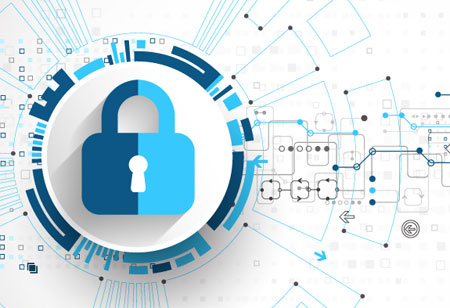THANK YOU FOR SUBSCRIBING
Consultants as Change Agents: Redefining Cybersecurity Compliance in Asia-Pacific
Regulatory compliance within the APAC region is shifting from reactive methodologies to proactive frameworks, underscoring the importance of continuous risk monitoring and adaptable systems for effective strategic management and integration.

By
Apac CIOOutlook | Wednesday, August 13, 2025
Stay ahead of the industry with exclusive feature stories on the top companies, expert insights and the latest news delivered straight to your inbox. Subscribe today.
Regulatory compliance within the Asia-Pacific (APAC) region is transitioning from a reactive, audit-centric "check-the-box" methodology to a more transformative framework. This approach, although formerly adequate, has become progressively insufficient in an era characterized by rapid technological innovation, evolving geopolitical dynamics, and intricate, interconnected markets. A novel paradigm is emerging, distinguished by its proactive, continuous, and adaptive nature, redirecting the emphasis from mere obligation fulfillment to the strategic management of risk.
This evolution signifies not merely a methodological adjustment, but a fundamental philosophical recalibration. The contemporary compliance function is no longer perceived as a fixed cost center, but rather as a value-contributing element of a robust business strategy. As the rate of change accelerates, particularly in technology-driven sectors and financial services, organizations are recognizing the inadequacy of traditional, annual review processes. This acknowledgement has facilitated the emergence of a new paradigm in compliance consulting, one that harnesses technology to deliver real-time insights and integrate compliance directly into the operational framework of the enterprise.
The Old Paradigm: A Strained Model
Its episodic nature characterized the traditional compliance model in the APAC region. Consultants were typically engaged to perform annual audits, review policies and procedures, or respond to specific regulatory inquiries or incidents. This process was often manual, time-consuming, and resource-intensive, relying heavily on document reviews and interviews. This method created a significant lag between the occurrence of a risk and its detection, leaving organizations vulnerable to reputational damage, operational disruption, and regulatory penalties.
This methodology was inherently retrospective, providing only a static snapshot of compliance at a given point in time. It inadequately addressed the inherent dynamism of both business operations and the regulatory landscape. In a region as variegated and rapidly evolving as APAC, where regulatory shifts can be abrupt and disparate across jurisdictions, this model proved inherently deficient. The imperative to remain current with an increasingly intricate network of local and international regulations—encompassing mandates from data privacy legislation to environmental, social, and governance (ESG) disclosure standards—rendered the traditional approach untenable.
The Rise of Continuous Risk Monitoring
Central to this new paradigm is the implementation of continuous risk monitoring. This proactive methodology leverages technological advancements to transcend static evaluations, thereby enabling a perpetual, real-time understanding of an organization's risk posture. Through the direct integration of technology into business systems, organizations can establish a continuous feedback loop that automatically identifies potential compliance issues as they emerge.
A comprehensive suite of advanced tools facilitates continuous risk monitoring. Artificial intelligence (AI) and machine learning (ML) algorithms analyze substantial quantities of data from diverse sources, identifying patterns and anomalies that may signify a policy infraction or regulatory non-compliance. These systems are capable of processing information from transaction logs, communication channels, and other operational data streams, thereby providing a panoramic organizational overview.
This capability enables the development of predictive analytics models that can anticipate future risks based on historical data and current trends. Rather than waiting for an incident to occur, organizations can now pinpoint potential areas of vulnerability and implement preventive measures. This transition from reactive incident response to proactive risk mitigation represents a significant paradigm shift, fostering a more strategic and efficient allocation of resources.
The Evolution to Adaptive Frameworks
In conjunction with continuous monitoring, the contemporary compliance function is predicated upon adaptive frameworks. Diverging from the rigid, standardized frameworks of the past, these emerging systems are designed for flexibility and scalability, enabling them to evolve in sync with the enterprise and its changing regulatory landscape. An adaptive framework constitutes not a static compilation of regulations, but an ecosystem amenable to adjustment in response to novel regulations, emerging risks, and shifts in business strategy.
These frameworks are distinguished by their modular and interconnected design. They integrate compliance controls directly into business processes, embedding them within the daily workflows of employees rather than imposing them as an external burden. This approach fosters a culture where compliance is a shared responsibility, rather than the sole purview of a specialized team. For instance, within a financial institution, an adaptive framework would embed anti-money laundering (AML) controls directly into the transaction processing system, automatically screening for suspicious activity in real-time.
The establishment of an adaptive framework necessitates a comprehensive evaluation of an organization's technological infrastructure, data architecture, and operational methodologies. The objective is to cultivate a seamless, integrated system that facilitates the unimpeded and intelligent flow of data, thereby enabling prompt and precise decision-making. Consultants are now instrumental in assisting organizations with the design and implementation of these integrated systems, ensuring their robustness, resilience, and preparedness to address the exigencies of a rapidly evolving global landscape.
The progression from reactive to proactive compliance has fundamentally altered the function of the compliance consultant. Contemporary consultants are no longer merely auditors or legal specialists; they serve as strategic partners, technological facilitators, and catalysts for change. Their expertise now encompasses not only regulatory comprehension but also data science, systems architecture, and organizational design.
Modern consultants assist organizations in navigating the complex process of selecting, implementing, and integrating new compliance technologies. They help in designing adaptive frameworks tailored to a business's unique needs, while remaining scalable for future growth and expansion. Their value lies in their ability to bridge the gap between regulatory requirements and technological capabilities, transforming abstract legal language into practical, automated controls that are effective and efficient.
The newly appointed consultant is instrumental in fostering a culture of compliance that recognizes integrity as a competitive advantage and resilience as a fundamental business principle. Within the diverse markets of the APAC region, this progressive methodology is not merely a strategic option; it is an indispensable element for achieving enduring sustainability and prosperity. By transcending reactive measures, the compliance sector in the region is strategically positioning itself as a potent catalyst for stability and innovation, thereby safeguarding the future of commerce in an increasingly intricate global landscape.





